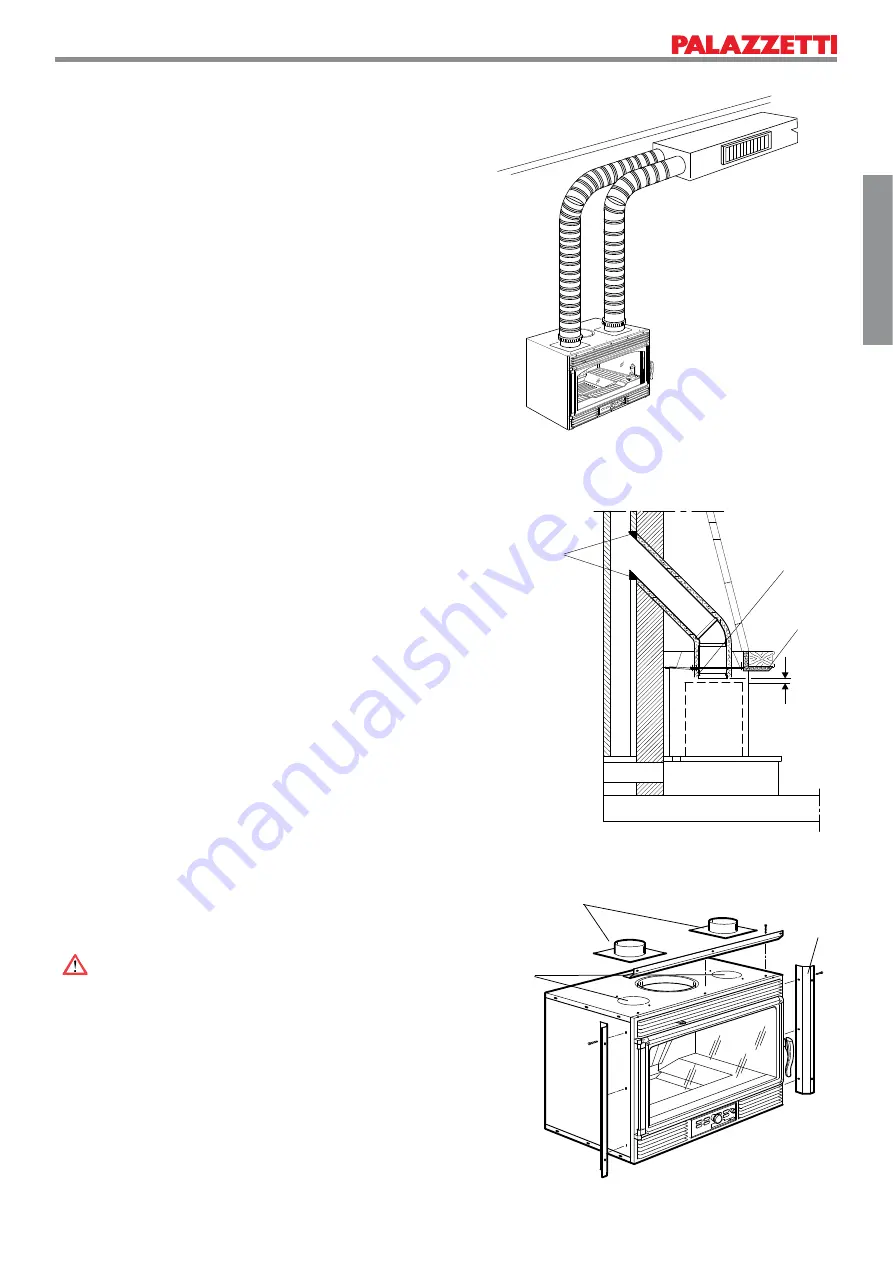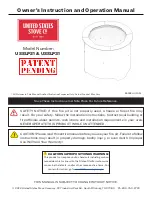
37
00 477 0152 -04/2017 - PALAZZETTI - PN - I
TALY
Fig. 5.4.3 B
Fig. 5.5
A
B
2÷ 12 cm
C
Fig. 5.6
A
B
C
ENGLISH
INSTALLATION
6.5
SINGLE DUCT PIPING (FIG. 5.4.3 B)
Alternatively, connect both hot air delivery pipes to a
À
exible pipe up to the opening of the distribution channels.
The pipes for distributing air must have an inside cross
section of 25 x 15 cm, they must be made in plain galvanised
sheet and insulated with a 30 mm thick layer of glass wool
to prevent noise and the loss of heat.
When
the
¿
replace is used to heat 2 or more adjacent
rooms, it is essential to help the recycling of the ambient
air to keep the temperature the same in each room. For
this purpose, install transit grilles on the doors or keep
them ajar.
6.6
APPLIANCE SMOKE FITTING - FLUE
The
Appliance
must be connected to the
À
ue with pipes
and curves in aluminate steel or stainless steel. It can be
connected in two different ways:
D
GLUHFWO\EHWZHHQ¿UHSODFHDQGÀXH
If the pipes cannot be made to pass between the
¿
replace and hood it would be a good idea to facilitate
the connection and assembly by making a hole on the
actual hood (Figs. 5.4.1-5.5)
b)
using the optional telescopic tube kit-
This is the way to do to it if you are installing your
Appliance
in an existing
¿
replace.
•
First
¿
x the telescopic pipe at a height so that there is
a space of 2 to 12 cm between the base of the
connection and the upper part of the Appliance (Fig. 5.5).
•
For
¿
xing use self-tapping screws at the bottom of the
prehood ring or hood, at the
¿
replace opening.
•
Now
¿
t the pipes and curves, sealing the join with
ceramic
¿
bre and cement mortar (Fig.5.5). If you are
unable to insert the pipes and
¿
ll in from the bottom, drill
the hood of the existing
¿
replace (Fig. 5.4.1).
7KH FRQQHFWLRQ WR WKH ÀXH RU WKH SDVVDJH FURVV
section in the prehood ring must be sealed accurately
)LJ$VHDO%WHOHVFRSLF¿WWLQJ
In fact, if sealing is anything but perfect, air could get
through to the
À
ue and reduce the
Appliance
draught plus
the ceramic glass of the door will turn and remain black.
Another consequence would be heat escaping through
the
À
ue.
If,
in
the
existing
¿
replace, there is a beam or other parts
in wood that are less than 16 cm away from the top edge
of the Appliance, such combustible material must be
protected from heat with an insulating panel, such as
cement chip or any other suitable material (Fig. 5.5:
C
Cement chip panel ).
Do not insert draught butter
À
y regulator diaphragms in
the
¿
tting.
















































